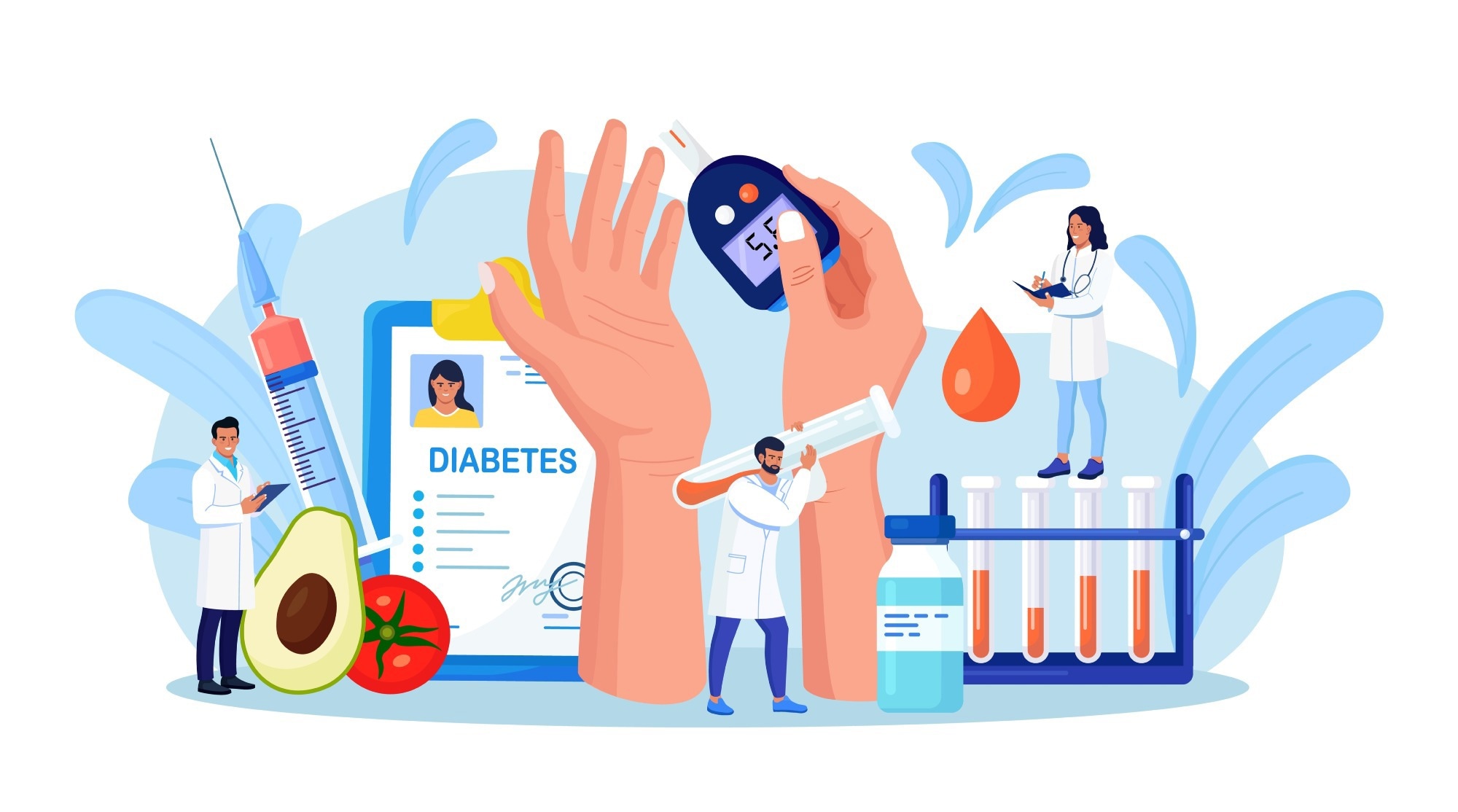In a recent study published in the Diabetes Care journal, researchers assessed the relationship between incident type 1 diabetes and recent coronavirus disease 2019 (COVID-19) Infection.
 Study: Relation of Incident Type 1 Diabetes to Recent COVID-19 Infection: Cohort Study Using e-Health Record Linkage in Scotland. Image Credit: Buravleva stock/Shutterstock
Study: Relation of Incident Type 1 Diabetes to Recent COVID-19 Infection: Cohort Study Using e-Health Record Linkage in Scotland. Image Credit: Buravleva stock/Shutterstock
According to medical claims databases, the US Centers for Disease Control and Prevention (CDC) found an increased incidence of diabetes among people under the age of 18 years, almost 30 days following severe acute respiratory syndrome coronavirus 2 (SARS-CoV-2) infection. There is proof that viral infections can cause type 1 diabetes through infection of pancreatic b cells, which sets off autoimmunity, as well as that they can accelerate autoimmunity and speed up the progression of type 1 diabetes to stage 3 in people with autoimmune b-cell destruction who are normoglycemic.
About the study
In the present study, researchers determined whether SARS-CoV-2 infection was linked to a higher incidence of type 1 diabetes incidentally.
Early in the epidemic, Public Health Scotland established the Rapid Epidemiological Analysis of Comorbidities and Treatments as Risk Factors for COVID-19 in Scotland (REACT-SCOT) study as a matched case-control study comprising all diagnosed SARS-CoV-2 infections in Scotland having up to 10 control individuals per case. These control individuals were matched for age, gender, and general practice. Individuals can be sampled more than once as a control and then as a case using the incidence density sampling design.
Including all diagnosed SARS-CoV-2 infections, the 3,938,454 persons recruited in the REACT-SCOT study up until 22 November 2021 accounted for 72% of the expected Scottish population in mid-2020. All 1,849,411 people sampled in REACT-SCOT who were under 35 years at baseline and had not received a diabetes diagnosis comprised the cohort at risk for the disease.
Each person's baseline (entry) date was the later of 1 March 2020, or the birth date. The date of exit was the earliest of the latest date of connected data extraction, the date of death, or the date of any diabetes proof. Records of COVID-19 vaccinations were collected from the Nationwide Clinical Data Store, a national database.
The first SARS-CoV-2 positive polymerase chain reaction (PCR) test in the Electronic Communication of Surveillance in Scotland database, which records all PCR testing for COVID-19 countrywide, was used to define SARS-CoV-2 infection. Some persons with a confirmed clinical diagnosis of COVID-19 who had never tested SARS-CoV-2 positive were included in the REACTSCOT cases. Based on the date of diagnosis and the type of diabetes that the practitioner entered in the SCI-Diabetes registry, incident cases of type 1 diabetes in Scotland between 2015 and 2021 were determined.
Results
Almost 365,080 of the cohort's 1,849,411 participants experienced their first SARS-CoV-2 infection between March 1, 2020, and November 22, 2021. During the follow-up period, 1,074 people incidentally acquired type 1 diabetes. The age distribution of those in the cohort who had type 1 diabetes and their COVID-19 status on or before the date of their diabetes diagnosis. Up until the date of their diagnosis, 69 incident case patients having type 1 diabetes had been found to have SARS-CoV-2 infection.
The data set used for Cox regression comprised 11,553,301 person-time intervals after the data set was divided into 1-day person-time intervals and thinned. The incidence ratios for type 1 diabetes linked with previous SARS-CoV-2 infection were 2.62 for infection within the last 30 days and 0.86 for the first COVID-19 diagnosis more than 30 days prior, using no prior infection as the reference category. The equivalent rate ratios in people under the age of 16 were 3.15 and 0.79. Notably, the incidence of type 1 diabetes was not correlated with COVID-19 immunization status.
The team plotted the dates of all reverse transcriptase (RT)-PCR tests—positive or negative—conducted for people with incident type 1 diabetes to determine whether the link between incident diabetes and a first positive test within the previous 30 days could be accounted for by higher testing rates near the date of a diabetes diagnosis. In the days leading up to and following the type 1 diabetes diagnosis, there was an increase in testing frequency, most of which were negative.
Overall, the study findings demonstrated a number of potential reasons for the 1.2-fold rise in type 1 diabetes incidence noted in children and adolescents during the pandemic. The researchers believe that since incident type-1 diabetes was not correlated to COVID-19, there is no causal effect of SARS-CoV-2 on type 1 diabetes.